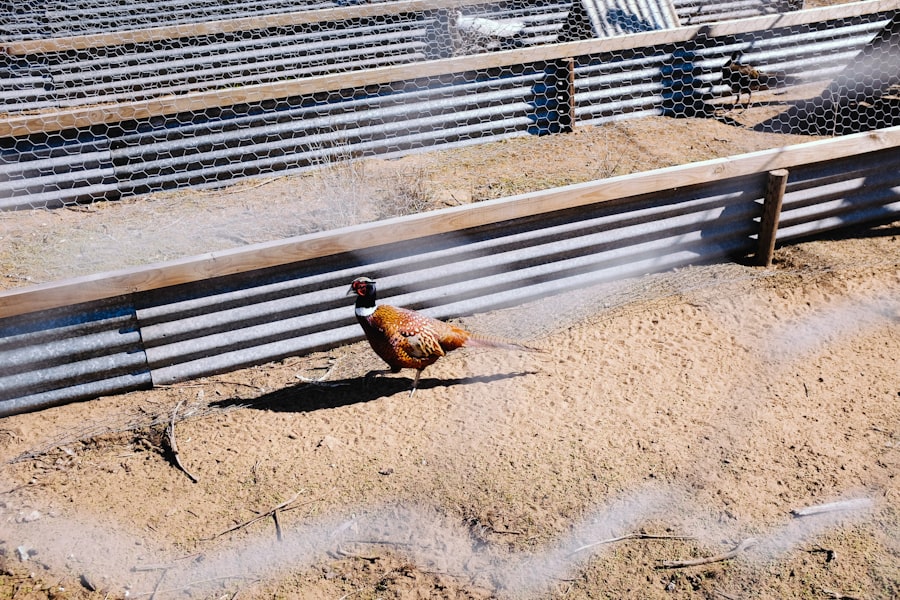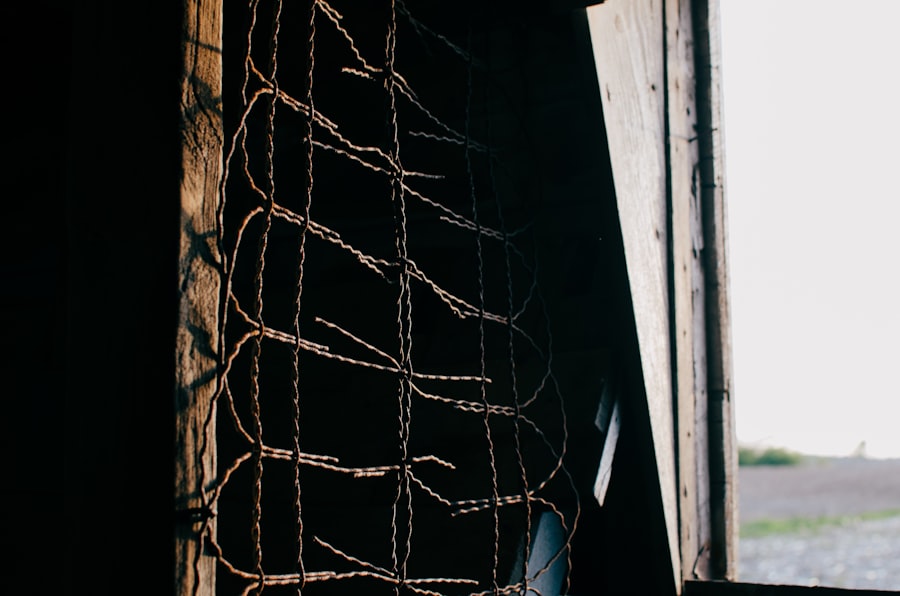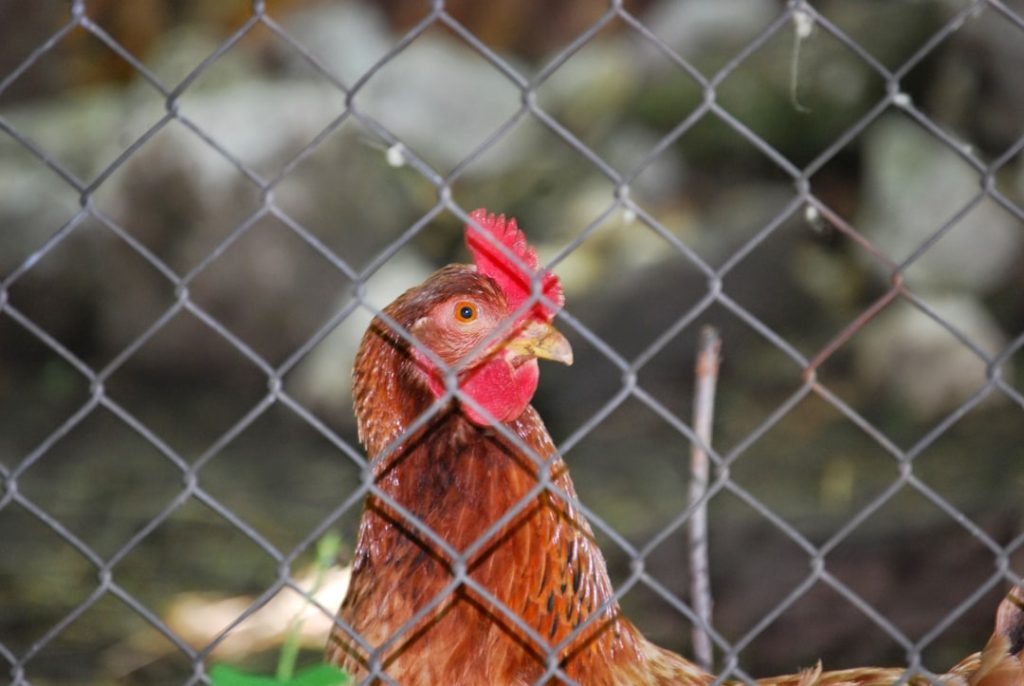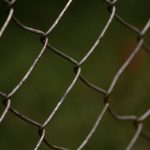Chickens can be valuable and enjoyable additions to farms and backyards, but there are valid reasons to restrict their access to certain areas. These reasons include preventing property damage, maintaining hygiene, and ensuring safety. Chickens may harm gardens by scratching and pecking at plants and soil.
Their droppings can create sanitation problems in unwanted locations. Safety concerns arise when chickens access areas where they could harm themselves or others. Keeping chickens confined to designated areas is also important for maintaining good relationships with neighbors and complying with local regulations.
Unrestricted chicken movement can lead to noise complaints, unpleasant odors, and property damage, potentially resulting in conflicts and legal issues. Understanding these factors is crucial for developing effective strategies to manage chicken movement and ensure the well-being of the birds, property, and community.
Table of Contents
- 1 Physical Barriers: How to Keep Chickens Off
- 2 Visual Deterrents: Scare Tactics to Keep Chickens Away
- 3 Scent-Based Repellents: Using Smells to Keep Chickens Off
- 4 Training and Behavior Modification: Teaching Chickens to Stay Away
- 5 Alternative Areas for Chickens: Providing a Suitable Alternative
- 6 Legal Considerations: Understanding Local Regulations and Zoning Laws
- 7 FAQs
Key Takeaways
- Chickens can cause damage and mess, so it’s important to keep them off certain areas.
- Physical barriers like fences and netting can effectively keep chickens away from specific areas.
- Visual deterrents such as scarecrows and reflective objects can help deter chickens from unwanted areas.
- Scent-based repellents like citrus peels and vinegar can be used to keep chickens away from certain areas.
- Training and behavior modification techniques can be used to teach chickens to stay away from specific areas.
Physical Barriers: How to Keep Chickens Off
Physical Barriers: A Simple yet Effective Solution
One effective way to keep chickens off certain areas is by using physical barriers. This can include installing fences, gates, or netting to prevent chickens from accessing specific locations. Fences can be made from a variety of materials such as wood, metal, or plastic, and should be tall enough to prevent chickens from flying or jumping over them.
Types of Physical Barriers
Gates can be used to control access to certain areas, allowing for easy entry and exit for humans while keeping chickens out. Netting can be used to cover garden beds or other vulnerable areas to prevent chickens from causing damage. Another physical barrier that can be effective in keeping chickens off certain areas is the use of chicken wire or mesh. This can be placed around plants or other sensitive areas to prevent chickens from accessing them.
Additional Methods for Deterrent
In addition to fences and netting, other physical barriers such as motion-activated sprinklers or noise devices can also be effective in deterring chickens from certain areas. These devices can startle chickens when they approach a restricted area, encouraging them to stay away. By using physical barriers, it is possible to create a clear separation between areas where chickens are allowed and areas where they are not, ultimately helping to maintain a harmonious environment for both humans and chickens.
Visual Deterrents: Scare Tactics to Keep Chickens Away

Visual deterrents can be an effective way to keep chickens off certain areas by using scare tactics to discourage them from approaching. One common visual deterrent is the use of decoy predators such as fake owls or hawks. These decoys can be placed in strategic locations to create the illusion of a threat, causing chickens to avoid the area.
Additionally, reflective objects such as shiny tape or CDs can be hung in the area to create movement and flashes of light that can startle and deter chickens. Another visual deterrent that can be effective in keeping chickens off certain areas is the use of scarecrows. Scarecrows can be placed in garden beds or other vulnerable areas to create a human-like presence that deters chickens from approaching.
Additionally, visual deterrents such as brightly colored flags or streamers can be used to create a visual barrier that discourages chickens from entering restricted areas. Furthermore, creating visual barriers with plants or landscaping features can also help to keep chickens off certain areas. For example, planting dense shrubs or hedges around garden beds can create a natural barrier that prevents chickens from accessing them.
By using visual deterrents, it is possible to create an environment that discourages chickens from approaching specific areas, ultimately helping to protect vulnerable plants and property.
Scent-Based Repellents: Using Smells to Keep Chickens Off
Scent-based repellents can be an effective way to keep chickens off certain areas by using smells that are unpleasant or threatening to them. One common scent-based repellent is the use of predator urine or predator scent markers. These products mimic the scent of predators such as foxes or coyotes, creating a natural deterrent that discourages chickens from approaching the area.
Additionally, other strong-smelling substances such as garlic, vinegar, or citrus peels can also be used to create a scent barrier that repels chickens. Another scent-based repellent that can be effective in keeping chickens off certain areas is the use of commercial repellent sprays or granules specifically designed for deterring poultry. These products often contain natural ingredients with strong odors that are unpleasant to chickens, creating a barrier that discourages them from approaching the area.
Additionally, creating scent barriers with natural materials such as pine needles or cedar chips can also help to repel chickens from specific locations. Furthermore, using essential oils such as peppermint, eucalyptus, or lavender can also be effective in creating scent barriers that deter chickens from approaching certain areas. These oils can be diluted and sprayed around vulnerable plants or property to create a natural deterrent that repels chickens.
By using scent-based repellents, it is possible to create an environment that discourages chickens from accessing specific areas, ultimately helping to protect plants and property from damage.
Training and Behavior Modification: Teaching Chickens to Stay Away
Training and behavior modification techniques can be used to teach chickens to stay away from certain areas by creating negative associations with those locations. One common training technique is the use of positive reinforcement to reward chickens for staying within designated areas while discouraging them from approaching restricted areas. This can be done by providing treats or rewards when chickens stay within designated boundaries while using deterrents such as noise devices or water sprays when they approach restricted areas.
Another training technique that can be effective in teaching chickens to stay away from certain areas is the use of aversive conditioning. This involves creating negative associations with specific locations by using deterrents such as loud noises, water sprays, or sudden movements when chickens approach restricted areas. Over time, chickens learn to avoid these locations due to the negative experiences associated with them.
Furthermore, creating consistent routines and boundaries for chickens can also help to teach them where they are allowed to roam and where they are not. By establishing clear boundaries and consistently enforcing them through training and behavior modification techniques, it is possible to teach chickens to stay away from certain areas. By using training and behavior modification techniques, it is possible to create a harmonious environment where chickens understand and respect boundaries, ultimately helping to maintain a balanced coexistence between humans and poultry.
Alternative Areas for Chickens: Providing a Suitable Alternative

Enrichment and Stimulation
These areas can be equipped with features such as dust baths, perches, and foraging opportunities to provide enrichment and stimulation for the chickens.
Alternative Sources of Food and Water
Additionally, providing alternative sources of food and water in designated areas can help to attract chickens away from restricted locations. By offering enticing food treats or setting up feeding stations in designated free-range areas, it is possible to redirect the attention of chickens away from vulnerable plants or property.
Natural Behaviors and Play Areas
By providing opportunities for natural behaviors such as scratching, pecking, and dust bathing in designated free-range areas, it is possible to satisfy the natural instincts of the chickens while keeping them away from restricted locations. Furthermore, creating designated play areas with toys and enrichment activities can also help to keep chickens occupied and engaged in alternative locations.
Legal Considerations: Understanding Local Regulations and Zoning Laws
When considering how to keep chickens off certain areas, it is important to understand local regulations and zoning laws that may impact where poultry are allowed to roam. Many municipalities have specific regulations regarding the keeping of poultry, including restrictions on where they are allowed to roam and how they should be contained. It is important to familiarize oneself with these regulations and ensure compliance when determining where chickens are allowed to access.
Additionally, understanding zoning laws and property boundaries is crucial when deciding where poultry are allowed to roam. Zoning laws may dictate specific land use regulations that impact where poultry are allowed on a property. It is important to consult local zoning ordinances and property surveys to determine where poultry are permitted to access and ensure compliance with these regulations.
Furthermore, understanding legal considerations related to nuisance laws and neighbor relations is important when determining where poultry are allowed to roam. Nuisance laws may address issues such as noise, odors, and property damage caused by poultry, and it is important to understand how these laws may impact where poultry are allowed on a property. Additionally, maintaining positive relations with neighbors by addressing any concerns related to poultry roaming can help to prevent conflicts and legal issues.
In conclusion, keeping chickens off certain areas may be necessary for a variety of reasons including property damage, hygiene, safety, community relations, and legal compliance. By understanding the reasons for keeping chickens off certain areas and implementing effective solutions such as physical barriers, visual deterrents, scent-based repellents, training techniques, providing alternative areas for chickens, and understanding legal considerations, it is possible to create a harmonious environment where both humans and poultry can coexist peacefully.
If you’re looking for ways to keep chickens off your garden, you might want to check out this article on chicken coop designs in Muskegon. It offers some great tips on how to create a secure and comfortable space for your chickens, which can help keep them from wandering into your garden and causing damage.
FAQs
What are some effective ways to keep chickens off something?
Some effective ways to keep chickens off something include using physical barriers such as fences or netting, using repellents such as citrus peels or vinegar, and training the chickens to avoid the area through positive reinforcement.
Why is it important to keep chickens off certain areas?
It is important to keep chickens off certain areas to prevent damage to property, protect plants and gardens, and maintain cleanliness in specific areas.
Are there any humane methods to keep chickens off something?
Yes, there are humane methods to keep chickens off something such as using natural repellents, providing alternative areas for the chickens to roam, and using positive reinforcement training techniques.
What are some common areas where people want to keep chickens off?
Common areas where people want to keep chickens off include gardens, flower beds, outdoor furniture, and specific areas of the yard or property where chickens may cause damage or create a mess.
Meet Walter, the feathered-friend fanatic of Florida! Nestled in the sunshine state, Walter struts through life with his feathered companions, clucking his way to happiness. With a coop that’s fancier than a five-star hotel, he’s the Don Juan of the chicken world. When he’s not teaching his hens to do the cha-cha, you’ll find him in a heated debate with his prized rooster, Sir Clucks-a-Lot. Walter’s poultry passion is no yolk; he’s the sunny-side-up guy you never knew you needed in your flock of friends!







